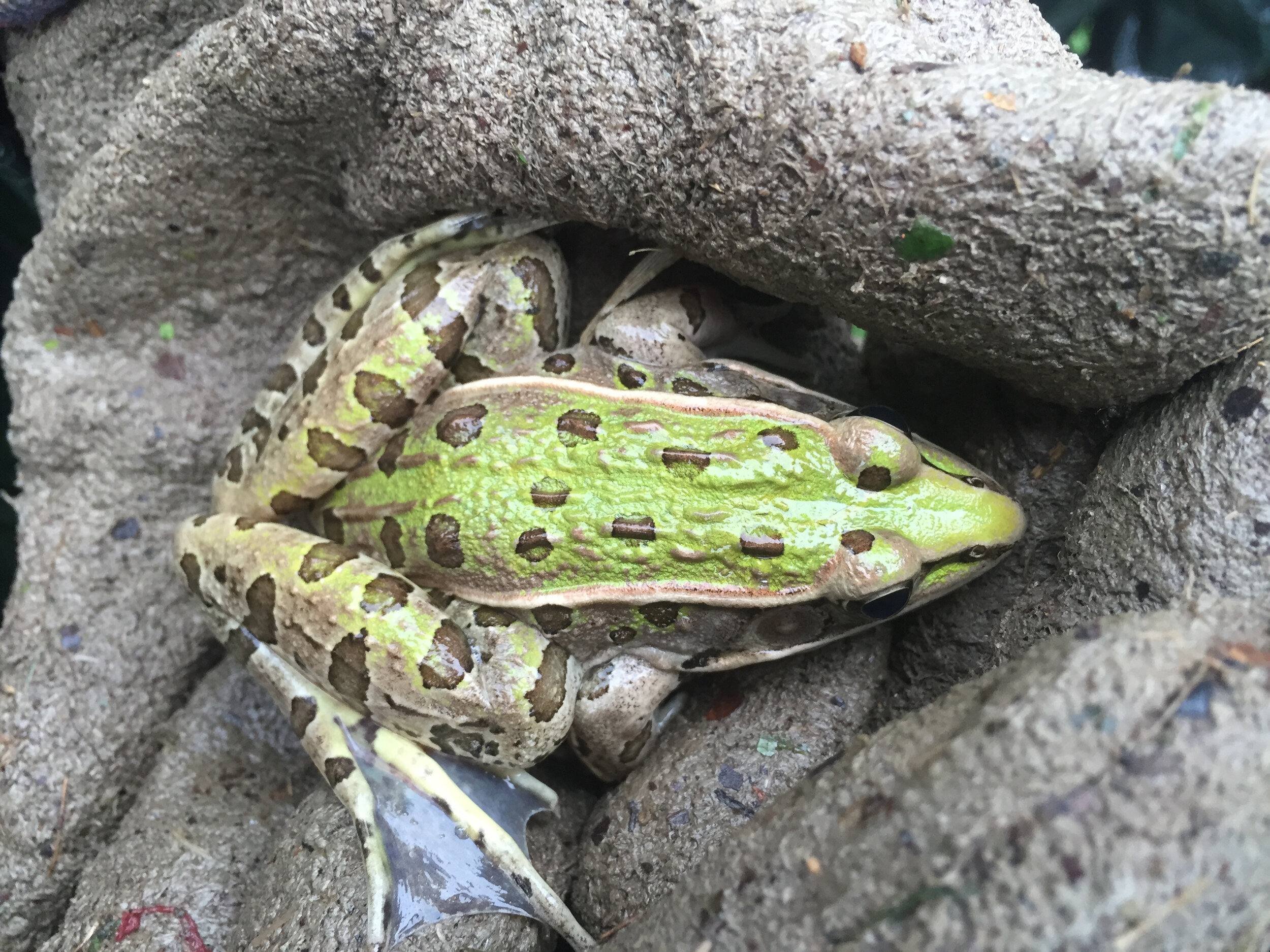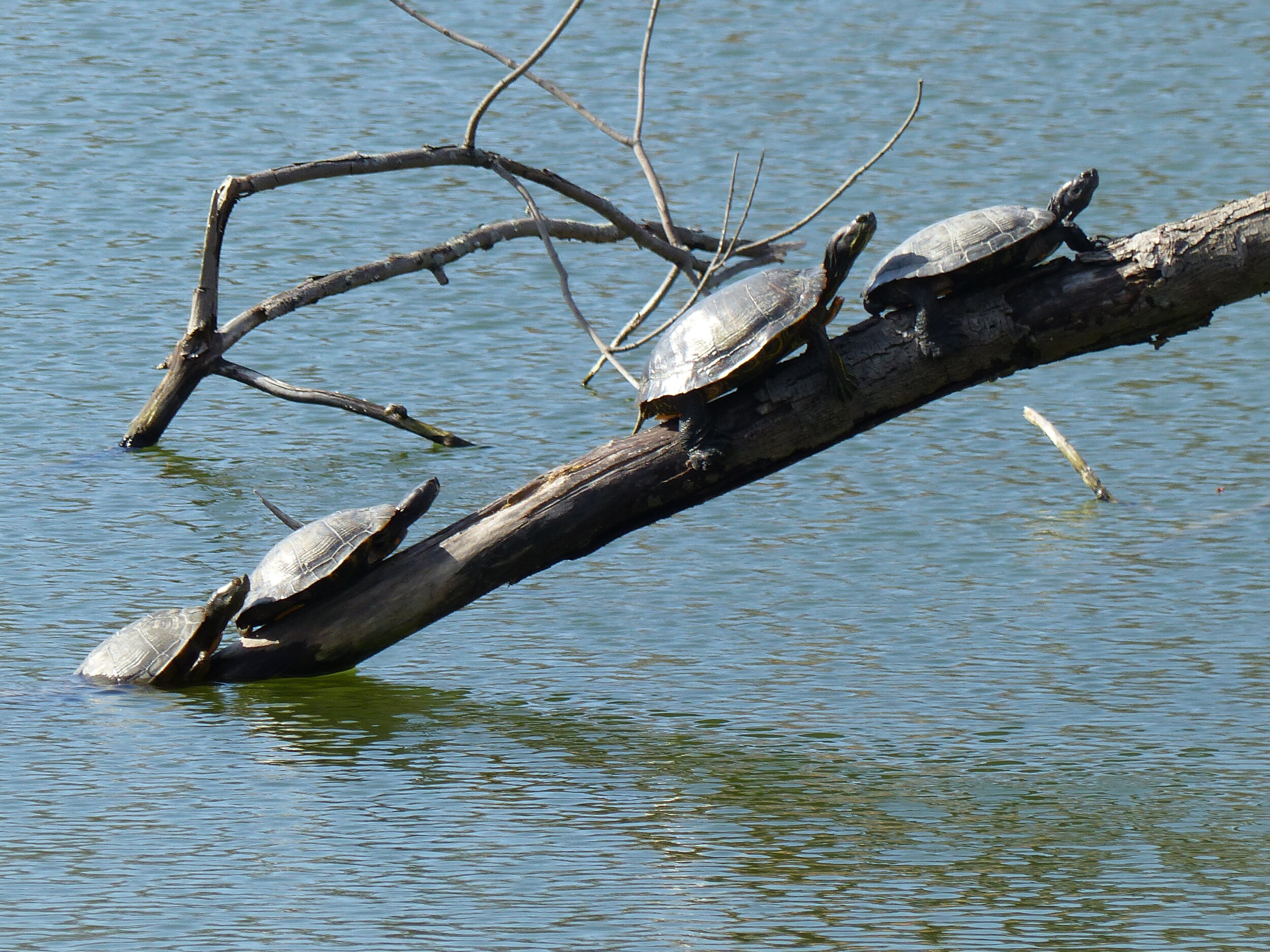5 Ways You Can Protect Forest Park’s Wildlife
Spreading across more than 1,300 acres, Forest Park is huge—for city-dwelling humans.
But for many of the 746 species of animals that call the Park home, space can be at a premium. That’s especially true in the spring, when the young are born and migrating critters on the move.
“Spring and fall are the highlights for observing wildlife in the Park,” Forest Park Forever Park Ecologist Amy Witt says. “ Birds are vocal and getting ready for the courtship and mating season. Also, abundant wildlife migrating north pass through the Park for the short period they exist in the region.”
That means that in addition to competing for survival, the Park’s birds and other wildlife compete for space.
“Each species needs vary,” Witt explains. “For example, we have three pairs of great-horned owls in the Park, and that’s about all we can support. They need nesting sites in large tree cavities that are also near mammals for food.”
“Green herons, on the other hand, don’t craft intricate nests but must be near water to feed on fish,” she continues. “Young herons hop from tree to tree, so they also must live in trees with branches that are closely intertwined.”
Of course, wildlife are capable of amazing adaptations. More deer have learned to live in the Park for longer periods in recent years, and red foxes are adept at creating homes in manmade structures, such as PCV water pipes. But other infrastructure, especially the roads that crisscross the Park, presents challenges that are difficult for species to overcome.
That’s why for this year’s World Wildlife Day (March 3), Witt is sharing five things that we human Park visitors can do to ensure Forest Park provides a space that is big enough—and protected enough—for all creatures to share, whether animal or human.
Obey the Speed Limit: “The Park is fragmented by roadways, and wildlife needs different things that different areas of the Park may support,” Witt says. “If you are driving too fast, you may not see an animal like a raccoon or a turtle crossing the road until it’s too late.”
Leave Wildlife in the Wild: Though animals are plentiful in the Park, populations of some species are limited, and an aquarium is not a good environment for animals born in the wild. “Any removal of an animal decreases the population’s ability to survive and for its genetics to thrive,” says Witt.
Keep Yourself on the Trail: It’s important to stay on trails, especially near wetlands, Witt notes. “We carefully control the flow of water in the Park to create breeding, watering, and feeding areas,” she says. “This is really important in spring and during droughts.”
Keep Your Pets Leashed and on the Trail: Per Park rules, all dogs must be leashed during your visit. While this is something that is respectful to other visitors, it also impacts wildlife. “Often, people want to let their dogs off the leash, but if a dog sees a possum or squirrel, it may want to chase it,” says Witt. “That takes away from the animal’s ability to feel safe and forces it to waste energy.
Let It Be, Let It Be: As animals themselves, humans sometimes have an urge to chase after animals, even if all they want is a photo. “That’s stressful for them,” Witt says, “just like it would be stressful for you if someone started chasing you around your home.”
Witt adds that while Forest Park provides wonderful habitats for wildlife, especially as a stopping-off point for migratory birds, everyone must play their part to help its creatures survive.
“There is nothing like hearing the scream of a vixen fox protecting its young, or seeing a hawk swoop down to catch its meal,” Witt says. “But we must all work together so that as many people as possible can share those amazing experiences in the middle of the city.”




